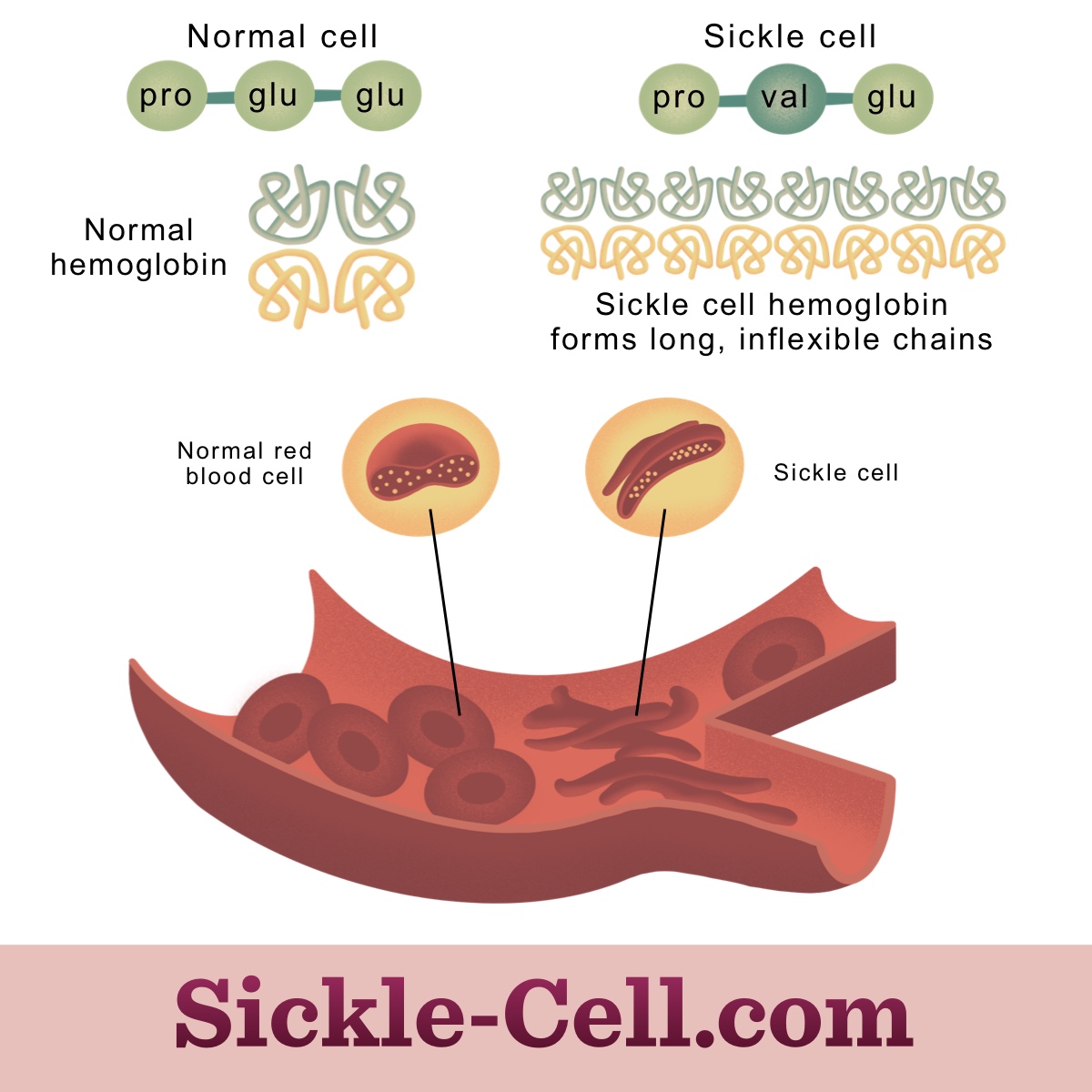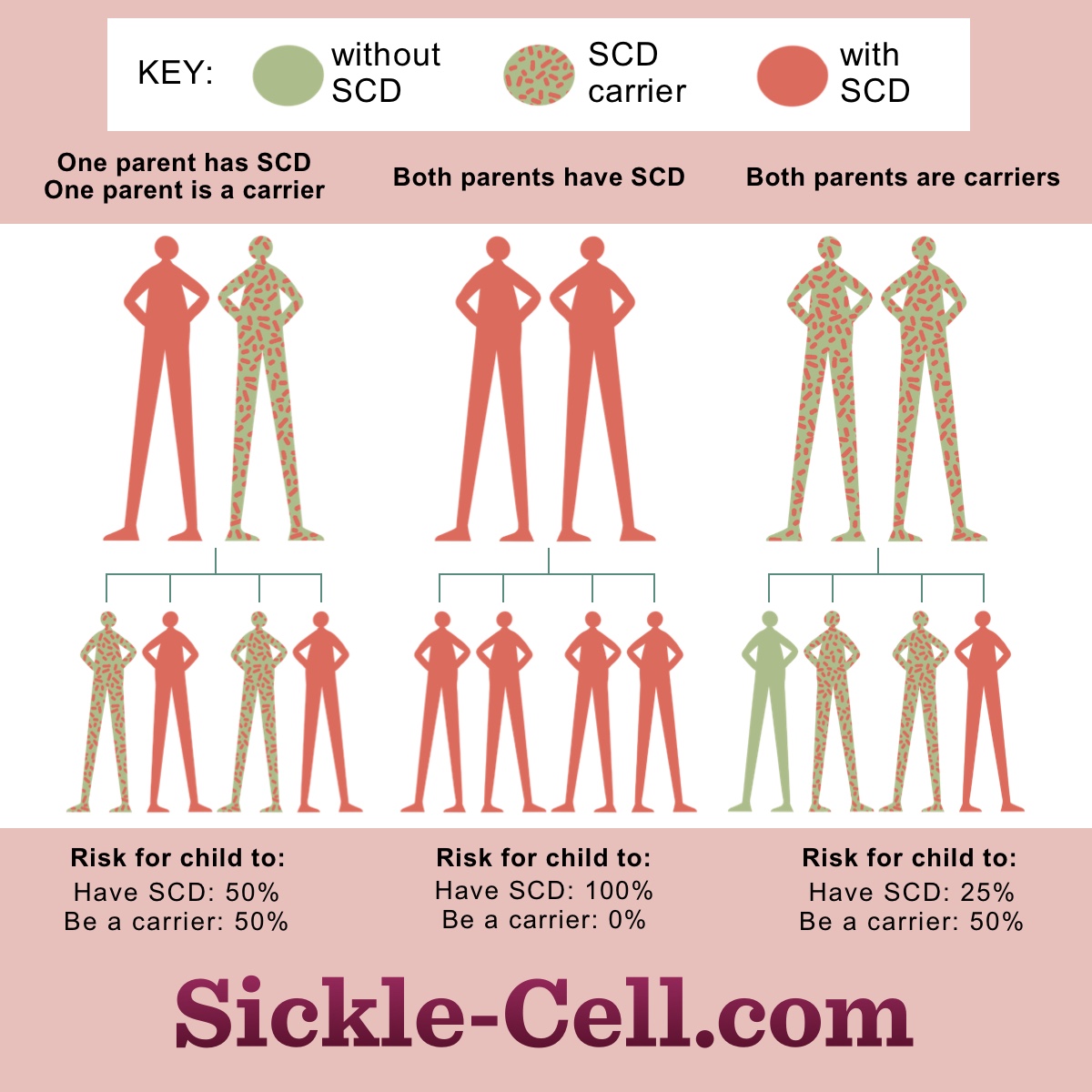What Causes Sickle Cell Disease?
Reviewed by: HU Medical Review Board | Last reviewed: January 2021 | Last updated: April 2024
Sickle cell disease (SCD) is a genetic disorder caused by a mutation in the HBB gene. This gene provides instructions for the body to produce a part of hemoglobin. Hemoglobin is a protein that carries oxygen throughout the body.
A mutation in the HBB gene causes hemoglobin to clump together and change the shape of red blood cells. This can lead to anemia and blocked blood flow for people with SCD.
SCD can only be inherited if each parent passes down a mutated HBB gene. This means it is a recessive trait. It also means a person cannot get SCD later in life.
What is the HBB gene?
The term “gene” means a segment of DNA that contains instructions for the body to make a specific protein. HBB is the name of the gene that encodes, or gives instructions to, one of the protein pieces that make up hemoglobin. These pieces are called “globins.”1
Hemoglobin is made up of 4 globins, which each carry a molecule of oxygen. Normal hemoglobin, called hemoglobin A (HbA), is made up of 2 “alpha globins” and 2 “beta globins.” Alpha globin is made with instructions from HBA genes. Beta globin is encoded by the HBB gene.1,2
How is the HBB gene mutated in sickle cell disease?
Genes are made up of a string of pieces called “nucleotides.” The body’s cells use the specific order of nucleotides as a template to make a specific protein. Proteins are long strings of fragments called “amino acids.” Mutation of a single nucleotide on the HBB gene causes a single amino acid mutation on the beta-globin protein. This is an example of a “missense mutation.”
Sickle hemoglobin, also called hemoglobin S (HbS), is the most common form of abnormal hemoglobin. It has 2 normal alpha globins but contains 2 sickle beta globins. Sickle beta-globin has an amino acid called “valine” instead of an amino acid called “glutamic acid” at a specific location in the protein. Other forms of abnormal hemoglobin are caused by different mutations in the HBB gene.1
Figure 1: Hemoglobin S (HbS) genetic and phenotypic mutations
The mutation in beta-globin causes hemoglobin to cluster together and misshape the red blood cells. This leads to the symptoms and complications experienced by people with SCD. Blood tests can identify HBB mutations and abnormal hemoglobin.3
How is the mutated HBB gene inherited?
The body’s genome, or complete set of DNA, is stored on large molecules called chromosomes. We have 2 copies of 23 chromosomes, with 1 copy coming from each parent. This means we inherit 1 copy of every gene from each parent. However, mutations may cause each copy to have a slightly different nucleotide sequence. Different variants of the same gene are called “alleles.”
Alleles can either be dominant or recessive. Dominant alleles cause a specific trait no matter what the other allele is. Recessive alleles lead to a specific trait only when paired with the same allele.
SCD is a recessive trait because people must inherit 2 copies of the mutated HBB allele to show symptoms. The most common form of this is sickle cell anemia, which occurs when someone inherits 2 copies of the sickle HBB allele. If someone receives 1 copy of the mutated HBB allele and 1 copy of the normal HBB allele, they are a carrier and have “sickle cell trait.”However, they usually do not show symptoms of SCD.4
There are 3 ways that can lead to a child having SCD:5
- If both parents have sickle cell trait
- There is a 25 percent chance the child will have SCD
- There is a 50 percent chance the child will have sickle cell trait
- There is a 25 percent chance the child will not have either condition
- If 1 parent has SCD and 1 parent has sickle cell trait
- There is a 50 percent chance the child will have SCD
- There is a 50 percent chance the child will have sickle cell trait
- If both parents have SCD
- The child will have SCD with 100 percent certainty
Figure 2: Gene inheritance probability for sickle cell disease
The HBB gene is located on chromosome number 11. This is not the sex chromosome, so SCD is not a sex-linked disease. This means that both men and women can get SCD.6

